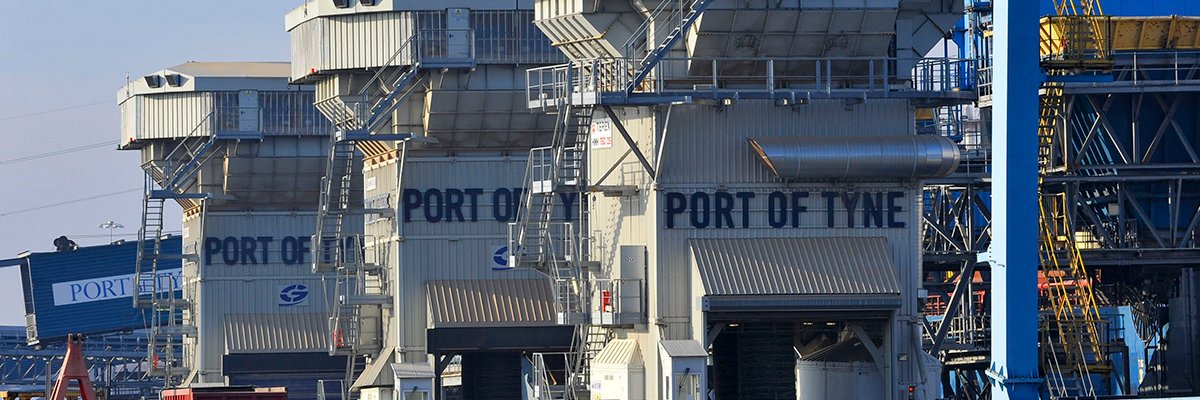The Port of Tyne – with the North East Automotive Alliance (NEAA), autonomous vehicle technology provider Oxa and cyber security provider Angoka – has secured UK government funding to help develop and deploy connected and automated mobility (CAM) services.
Based in the north-east of England, the Port of Tyne is one of the UK’s major deep-sea ports, and describes itself as delivering bespoke offerings for the green energy sector, supporting automotive transition, handling specialised bulk and containerised products, alongside delivery logistics, and assisting growing passenger numbers via an International Passenger Terminal.
Overall, the port is calculated to add £658m to the regional economy, supporting 10,400 jobs directly and indirectly. A trust port, it is entirely self-financing and runs on a commercial basis, reinvesting all of its profits back into facilities along the River Tyne.
The funding has been delivered through the £150m CAM Pathfinder Enhancements programme, which aims to address the challenges of bringing CAM vehicles to market, providing funding for projects that are intended to develop “world-first” technologies, products and services, ranging from “cutting-edge” software to smart transport services. Projects funded by CAM Pathfinder must demonstrate that the cutting-edge technology or mobility services being developed can help industries become safer, sustainable, inclusive and more productive.
The programme is funded by the Centre for Connected and Autonomous Vehicles, a joint unit between the Department for Business and Trade and the Department for Transport, delivered in partnership with Innovate UK and Zenzic.
Under the funding, NEAA – a collaborative, industry-led cluster dedicated to fostering a competitive and sustainable environment for businesses – is working with its partners to deliver Port-Connected and Automated Logistics (P-CAL), a project set to demonstrate autonomous container transport at the Port of Tyne.
Building on the success of the 5G CAL and V-CAL initiatives in the Newcastle and Sunderland areas respectively, both previously supported by UK government, P-CAL is said to mark a significant leap forward in connected and automated logistics for UK ports. The initiative will see the deployment of a fully autonomous terminal tractor and secure mesh communication network to move containers between the dockside and the container compound, creating what is said to be a UK first in waterside port automation.
P-CAL will operate in a new and complex operational design domain, tackling the challenges of a high-traffic, dynamic quayside environment. These include real-time coordination with cranes, seamless integration with Terminal Operating Systems and robust cyber security for safe, remote operations.
Running over nine months, the project also aims to demonstrate a scalable, safe and commercially viable autonomous logistics service that supports the UK’s net-zero goals while enhancing efficiency and safety. It is expected to reduce costs, create skilled jobs and lay the groundwork for the wider adoption of autonomous logistics across UK ports and distribution centres.
“The P-CAL project cements the North East’s position as a driving force in industrial innovation,” said Matt Beeton, CEO at the Port of Tyne. “By deploying autonomous logistics in a live port environment, we’re not only enhancing safety and operational performance, but we are also shaping the future of the sector. We’re proud that the Port of Tyne is leading the work with our key partners, and proving what’s possible for ports across the UK and beyond.”
NEAA CEO Paul Butler said: “P-CAL addresses the unique demands of quayside operations, where vehicles must coordinate precisely with cranes and navigate a constantly changing environment. This moves beyond our previous work into a completely new operational setting. With a focus on innovation, collaboration and environmental responsibility, this project will showcase the future of freight logistics.”
Gavin Jackson, CEO at Oxa, added: “The P-CAL project is a prime example of industrial mobility automation in action. What we’re showcasing here – safely automating complex container movements in a dynamic port environment – will act as a blueprint for port terminals in the UK and beyond. We believe this initiative offers a compelling vision for how autonomous technology will continue to optimise logistics – enhancing reliability and efficiency, and improving operational safety globally.”
